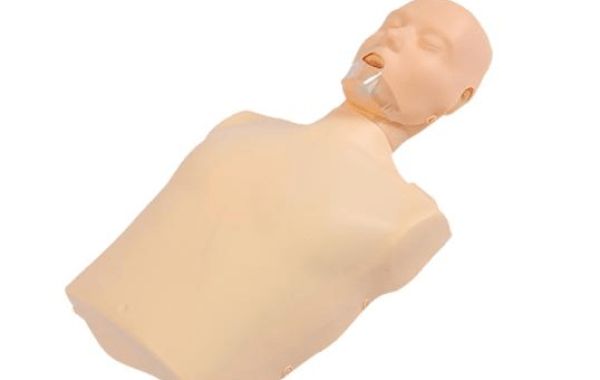CPR manikins are available in a variety of models and feature sets, allowing for training at various levels and catering to specific needs. Here's a detailed breakdown of the features commonly found in CPR manikins, organized by functionality and purpose:
1. Basic Functionality
- Realistic Anatomy: The simulator mimics the human body's torso, head, and airway, allowing for proper hand placement, chest compressions, and head tilt/chin lift techniques. Some models may also include arms and legs to allow for full-body resuscitation training.
- Durable Construction:Constructed from durable materials such as plastic or rubber to withstand frequent use during training sessions.
- Portable and Lightweight: Easy to transport and setup in various training environments.
2. Feedback Mechanisms
- Compression Clicker: Provides an audible and tactile click when chest compressions reach the correct depth (5-6 cm for adults), assisting trainees in applying appropriate pressure.
- Compression Depth Indicator:A visual indicator, such as a bar or light system, helps trainees monitor and adjust their compression technique for optimal results.
- Rate Indicator:Provides visual or auditory feedback on compression rate (typically 100-120 per minute for adults), assisting trainees in achieving accurate and consistent results.
- Lung Rise:Using proper ventilation techniques during rescue breaths can cause the manikin's chest to rise and fall, indicating effective air delivery.
3. Advanced Features
- Palpable Pulse:It simulates a pulse point on the wrist or carotid artery, allowing trainees to practice detecting a pulse and checking for signs of circulation.
- Anatomical Landmarks: These may include visible ribs or landmarks that allow for proper hand placement during compressions.
- Choking Simulation:Some models simulate choking scenarios, allowing for practice with the Heimlich maneuver.
- Multiple Scenario Simulation:Advanced models can simulate various medical emergencies, including blocked airways, cardiac arrest with different rhythms, and pediatric scenarios.
- Wireless Connectivity:Certain models can communicate wirelessly with software or apps, allowing for detailed feedback and analysis of training performance, such as compression depth, rate, and hand placement.
It's worth noting that the specific features available will differ depending on the type and model of CPR manikin. Choosing the appropriate manikin is determined by the intended training program, desired functionalities, and budget. Regular maintenance and cleaning is essential. Remember that even a basic CPR manikin can be extremely effective in teaching fundamental resuscitation techniques, whereas more advanced features provide in-depth training for complex scenarios and advanced learners.







